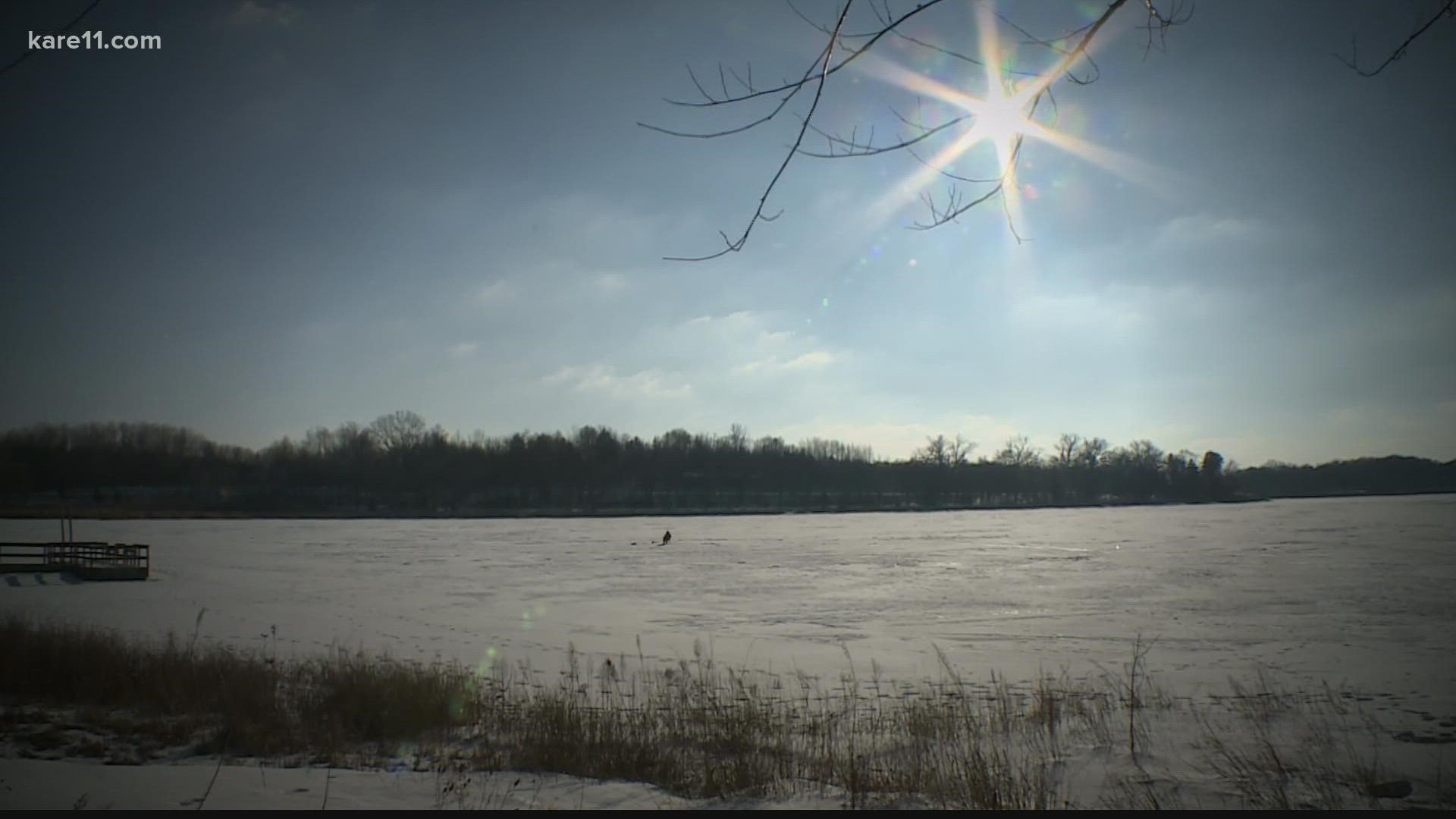ST PAUL, Minn. — Nick Sacco's job planning programming for the Three Rivers Park District has gotten a bit more difficult in the last five years or so. He says it's no longer a sure bet that he'll have safe ice on which to take fishing program participants out in late December.
"We're seeing that there's less and less time for people to be out and about [on the ice in the winter]," he said.
A new joint report from the Minnesota Department of Natural Resources and Pollution Control Agency backs up Sacco's anecdotal findings. The agencies compiled years of ice reports on Minnesota lakes, sent in by lake observers who track ice-in and ice-out dates on each body of water.
The report found since 1967 on Minnesota lakes, ice-in dates have moved about nine days later on average, while ice-out have moved about four to five days earlier. It amounts to about two weeks less ice time a season.
"The long-term trend is less ice," said Dr. Kenny Blumenfeld, senior climatologist with the DNR who helped with the report. "It's not something you would see every single year or on every lake. It's just in general there's been a tendency for an average winter to have less lake ice cover."
The report points to climate change as the driver behind the trend. Blumenfeld says warmer winters lead to less ice.
"There's less chance for ice to form and more chance for ice to melt," he said. "The changes that we're seeing in temperature actually kind of match what we're seeing with the lake ice cover."
It's had a direct impact on Sacco's work. He's had to change his winter programming, fitting classes into a shorter timeframe during the season and even cancelling classes.
"I would like to think we can modify things, but it's becoming more and more challenging," he said.
RELATED: Lake Superior swallows the shore

